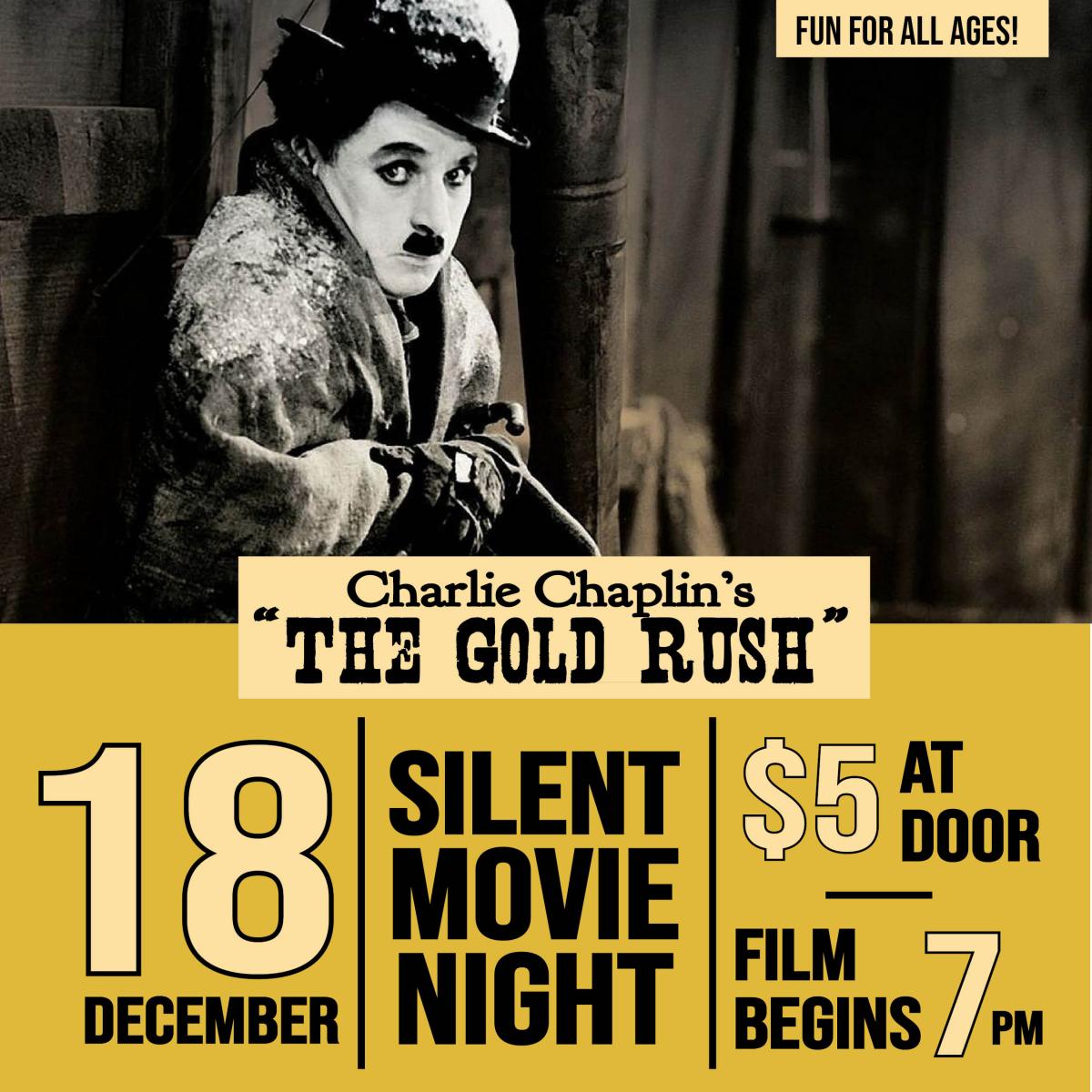Join us at the museum for a Silent Movie Night featuring the 1925 Charlie Chaplin film “The Gold Rush”. Doors open at 6:45pm. $5 at the door; FREE for museum members. Preceding the feature film will play a 1918 short film “A Day in Skagway”  from the museum collection.
from the museum collection.
About the film:
“The Gold Rush” is a 1925 silent Charlie Chaplin comedy based on the 1896 Klondike gold rush. Chaplin plays the part of the lone prospector, a young miner during the gold rush. After getting caught in a storm, he hurries to the only shelter that he can find, a cabin. There he meets the tough criminal Black Larson and Big Jim, another prospector. Numerous hilarious misadventures lead to the lone prospector falling in love with the beautiful Georgia. He tries to win her heart with his singular charm.
Chaplin believed that tragedy and ridicule are never far apart. Inspired by stereoscope images of the 1896 Klondike Gold Rush, especially the endless line of prospectors snaking up the Chilkoot Pass, and a book he read about the Donner Party Disaster of 1846, Chaplin transformed these tales of privation and horror into a comedy. His popular tramp figure became a gold prospector, joining a mass of brave optimists to face the hazards of cold, starvation, solitude, and the occasional incursion of a grizzly bear.
“The Gold Rush” abounds with now-classic comedy scenes. The horrors of starving 19th century pioneers inspired the sequence in which Charlie Chaplin and his partner Big Jim (Mack Swain) are snowbound and ravenous. Charlie cooks and eats his boot, with all the airs of a gourmet. In the eyes of the delirious Big Jim, he is transformed into a chicken – a triumph both for the cameramen who had to effect the elaborate trick work entirely in the camera; and for Chaplin who magically becomes a bird. Another memorable scene is the teetering of the cabin while the men inside slide around.
The lone prospector’s dream of hosting a New Year dinner for the beautiful dance-hall girl Georgia provides the opportunity for another famous Chaplin set-piece – the dance of the rolls. When the film was first shown audiences were so thrilled by the scene that some theaters stopped the film, rolled it back and performed an encore.
“The Gold Rush” is Chaplin’s greatest and most ambitious silent film; it was the longest and most expensive comedy produced up to that time. To the end of his life he frequently declared that of all his films, this was the one by which he would most wish to be remembered. Today, it is one of Chaplin’s most celebrated works.
